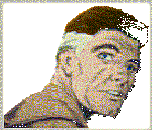
Craig Robinson
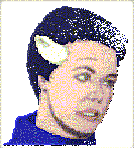
June Robinson
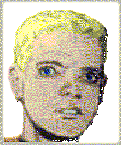
Tim Robinson

Tam Robinson
 Craig Robinson |  June Robinson |  Tim Robinson |  Tam Robinson |
The year is 2002.
Craig and June Robinson are scientists hailing from
Woodland Hills, California, USA, whose family is chosen as the crew for
Space Station One. They're joined by their two young teenagers,
Tim and Tam, and the family pets, a terrier named
Clancy and a parrot named Yakker. The Station is designed
to serve as a combination space research platform, mobile base of
operations in support of other space missions, and space outpost. It has
a powerful magnetic drive which allows the Station to operate in
planetary atmospheres, hence its aerodynamic design, and also to
accelerate to velocities approaching lightspeed during space flight.
When we first encounter it on the splash page of the first story, it is
quite some time after the Space Station has been dispatched to hold a
position at some distance outside our solar system.
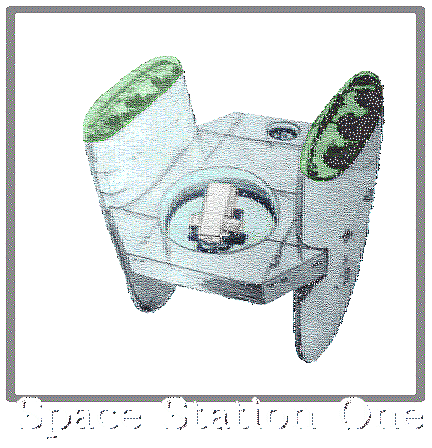
The overall length of the main section, the
deck-like hexagonal structure amidships, is about 100 feet, as is the
approximate overall width. To forward on the leading edge of this
section is the small transparent dome of the Space Station's control
room. Craig and June are usually directing operations from here. On the
aft end of the main section is the large observatory dome with its
powerful telescope.
The two "towers" are about 100 feet tall, about 70 feet long, and about
30 feet wide. They appear to be perpendicular to the main section in
side views, but an end-on view of the Space Station shows that the
towers' tops are actually slanted outward a bit in relation to the
horizontal axis of the main section. The uppermost deck of each of the
towers is a solarium with hydroponic gardens, and both towers'
second-to-lowest deck is a hangar deck with a convenient pair of parking spaces for the Station's
rocket-powered scoutcraft, which is called a Spacemobile. The
lowest deck, at the keel of each of the towers, features clamshell doors
concealing a docking bay for the automated supply rockets that fly out
from Earth bases to replenish the Space Station's supplies.
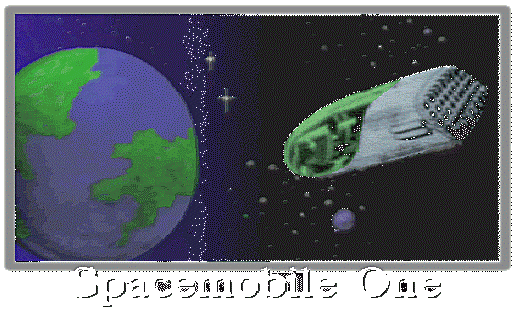
The Spacemobile is described as rocket-powered, using hydrogen
peroxide for fuel after the fashion of the NASA boosters of the time.
The official dimensions were given in the SFR letter column as 25
feet long and 7 feet wide, weighing 1300 pounds.
The Robinsons spend their first issue having adventures in the
immediate neighborhood of our solar system. First contact is already old
hat, as there seems to be quite a few alien races living in our local
group of stars. In their first adventure, Tim and Tam head out in the
Spacemobile to answer a distress signal from an as-yet-uncontacted
planet called Orious, and don't seem particularly excited about the
first contact encounter at all. The young Robinsons quickly get down to the
business of helping their new-found blue-skinned friends solve their
problems with a weather-control threat from a maurading alien called Gorko, almost in good ol' Star
Trek fashion, a formula repeated quite often throughout the run of
the magazine.
It isn't until issue #2 that the Robinsons, like their 19th
Century namesakes, have their vessel swept up in a cosmic storm and flung into outermost parts unknown.
In retrospect, the title of the lead story in the spring 1963 issue
of SFR would appear fateful some three years later:
It was, of course, called "Lost in Space."